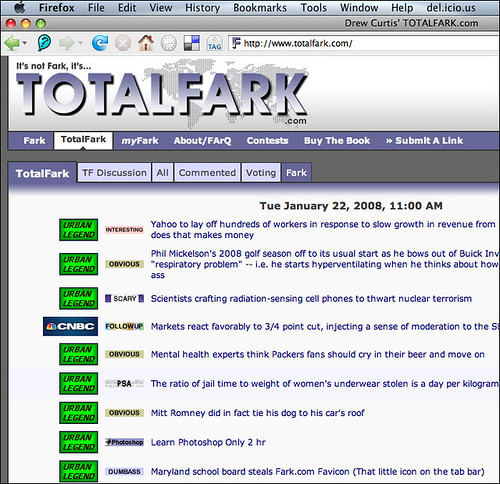Crowdsourcing a Restaurant: Good Luck With That
The theme the community has picked is, er, a "sustainable vegetarian/raw food restaurant," with a community-center vibe.
Now, the article mentions that the owner/funder has the final say over all business decisions, so presumably she's crunched the numbers and sees a market opportunity that backs up the community's sentiment. I don't know anything about consumer demand for raw foods or the restaurant business (other than it's a tough racket), so I'll leave that be -- other than to say that what might work for a co-op or other collective endeavor, might not work for a 3,500 square foot restaurant with $1 to 1.5 million in startup costs, and that has to have appeal outside of the core community participants.
However, I do note a few caveats on relying on a community for feedback and guidance. I believe it's a valuable practice -- but you have to go in with your eyes open:
1. The loudest, most engaged people do not necessarily represent your entire target audience. Paying attention to users is important. Paying attention to all users -- not just the loud ones -- is also important. You need to capture the wants and needs of people who don't participate in the community, too, which requires looking at metrics, testing, and other forms of research.
For example, in product development communities, your active contributors may be power users or edge cases clamoring for features that have little value to the rest of your core audience. Overserving them can pull resources away from items of greater benefit to the larger community.
Look at the political primary system, where candidates cater to primary participants (the most engaged, active, and extreme sections of the electorate) to build momentum, then move to the center for broader appeal in the general election.
2. Don't forget about Participation Inequality. This is basically a restatement of point #1 -- the loudest users will dominate the conversation. Even if they are "influencers" with disproportionate impact on other people, you're still only hearing a few voices.
The Elements community has about 400 people -- here's a graph of their top 20 community points holders (which I will use as a proxy for participation -- I left out the #1 "Living Green" user, since that's composed of 4 people):
Sorry, no means, medians, or standard deviation -- this is as statistics as I get.
3. If "The squeaky wheel gets the grease," wheels will find reasons to squeak. Again, this goes to audience tunnel vision. People are not wheels -- they like it when you pay attention to them, they get used to it, and they find ways to maintain your attention. You need to continually reach out to new voices (while at the same time, you can't alienate your early adopters -- it's tricky.)
4. Community drama can impact the business. Inevitably, every community goes through crises. Sometimes it's board drama that goes overboard. For activist-types, it's often a case of the revolution eating its own -- factions develop. In some cases, it's the introduction of a poisonous personality or incompatible culture.
If the business is explicitly tied to the community, this can be a problem. If you intervene, you're seen as taking sides. And if the community splinters in a meaningful way, you've got a big problem.
I don't have a case study, but I do have an anecdote, courtesy of subscriber letter in a March 1989 copy of Dragon magazine (I unearthed it and liberated it from my parents' house a while back):
A Dungeons-and-Dragons-type gaming group in Kentucky, numbering about 200, had an influx of what we today would call "griefers." This eventually caused group members to drop out, then splinter into smaller factions that eventually both withered away. In the process, the local gaming store (which provided supplies and a venue) saw its clientele dry up and subsequently went out of business. The community, which formerly sustained the business, took the business down with it.
The article says, "Unlike so many Web discussion sites, there are no angry or insulting posts in the Elements community." To that, I would just add, "Yet." Community conflict is inevitable... but it can be managed.
Conclusion
Anyway, the proof is in the pudding. Going to the community for feedback is great, but it's only one part of the puzzle. Unless the 10% of active and semi-active contributors is going to eat at the restaurant all-day, every day, the proprietors need to make sure they're not just catering to the whim of a select group of people, especially if they need to make a broader audience play.
(I was just going to add this to my del.icio.us slushpile for later neglect, but I'm making a conscious effort to reduce my post-procrastination; that is, post more, bookmark less.)
Labels: community, dc local, food, social media
